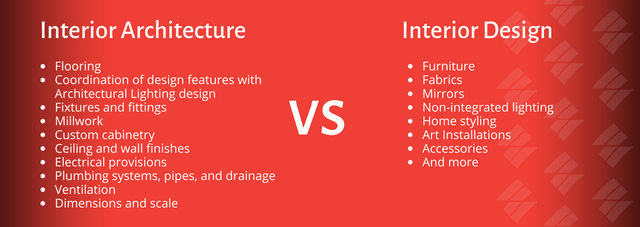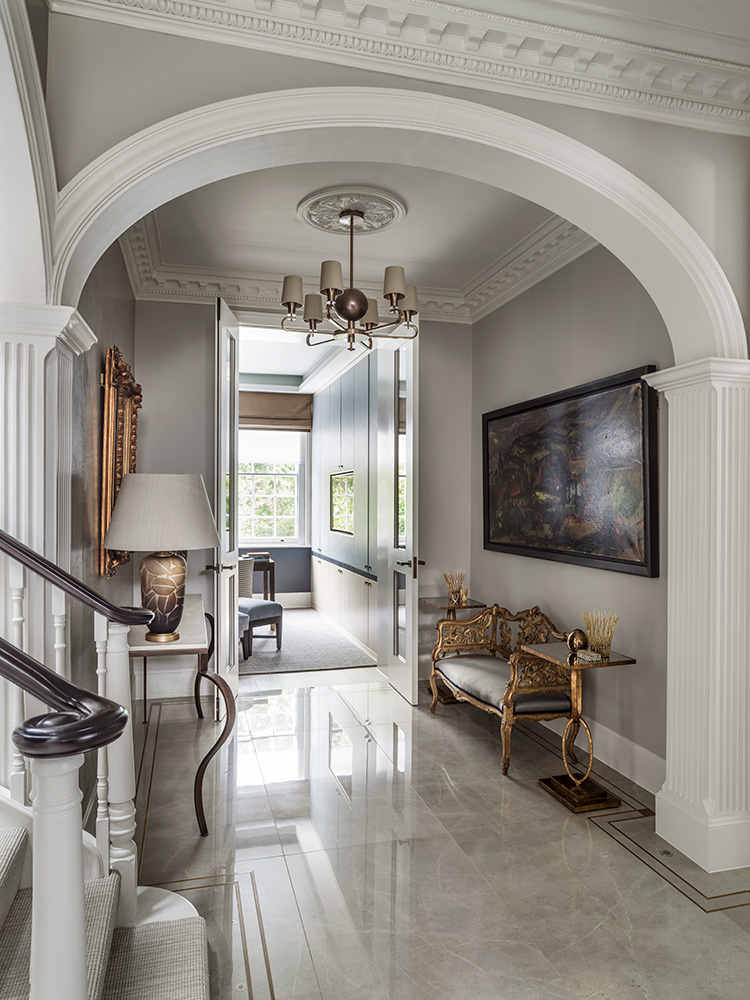Explore Expert Hampshire Architects for Your Next Project
Explore Expert Hampshire Architects for Your Next Project
Blog Article
The Art of Equilibrium: Exactly How Interior Design and Home Architect Collaborate for Stunning Outcomes
In the world of home style, striking a balance in between visual appeals and capability is no little feat. This fragile balance is achieved with the harmonious collaboration between interior developers and engineers, each bringing their one-of-a-kind knowledge to the table. The outcome? Spaces that are not only visually spectacular but also very habitable. However, this excellent mix is not constantly simple to obtain. Stay with us as we check out the ins and outs of this collective process and its transformative impact on home style.
Understanding the Core Distinctions Between Interior Layout and Home Architecture
While both interior design and home design play crucial functions in creating aesthetically pleasing and functional spaces, they are inherently different self-controls. It deals with the 'bones' of the structure, functioning with spatial measurements, load-bearing walls, and roof covering layouts. On the various other hand, indoor layout is much more concerned with boosting the sensory and aesthetic experience within that structure.
The Synergy Between Home Style and Interior Decoration
The synergy in between home architecture and Interior Design exists in a common vision of design and the improvement of practical looks. When these two fields line up harmoniously, they can change a home from regular to phenomenal. This partnership calls for a deeper understanding of each technique's principles and the capacity to develop a natural, cosmetically pleasing setting.
Unifying Design Vision
Unifying the vision for home design and Interior Design can create an unified home that is both functional and cosmetically pleasing. The balance begins with an integrated mindset; designers and interior developers work together, each bringing their knowledge. This unison of ideas develops the design vision, a plan that overviews the project. This common vision is essential for uniformity throughout the home, ensuring a liquid shift from outside architecture to interior areas. It promotes a synergistic technique where architectural aspects enhance Interior Design parts and vice versa. The result is a cohesive space that shows the homeowner's taste, character, and way of living. Therefore, unifying the design vision is vital in blending style and Interior Design for stunning results.
Enhancing Practical Aesthetics
Just how does the harmony between home style and Interior Design improve functional visual appeals? This synergy enables the development of spaces that are not only aesthetically enticing but likewise pleasantly functional. Engineers lay the groundwork with their structural style, making certain that the space is efficient and functional. The indoor developer then complements this with carefully selected components that boost the aesthetic appeals without endangering the capability. This unified collaboration can result in homes that are both lovely and livable. An architect might design a house with high ceilings and large home windows. The indoor developer can after that emphasize these attributes with high plants and large drapes, respectively, thus enhancing the aesthetic appeal while maintaining the useful benefits of natural light and spaciousness.
Value of Collaboration in Creating Balanced Spaces
The cooperation between indoor designers and engineers is essential in creating well balanced areas. It brings consistency between layout and design, offering birth to areas that are not only cosmetically pleasing but additionally that site functional. Discovering successful collective strategies can supply insights right into how this synergy can be effectively accomplished.
Harmonizing Style and Design
Equilibrium, a necessary aspect of both Interior Design and style, can only genuinely be attained when these two fields work in consistency. This harmony is not simply a visual consideration; it influences the functionality, durability, and inevitably, the livability of a space. Inside designers and designers should comprehend each other's functions, appreciate their knowledge, and interact properly. They must consider the interplay of structural components with decor, the flow of areas, and the impact of light and color. This collective procedure results in a cohesive, balanced style where every aspect has an objective and contributes to the overall aesthetic. Integrating layout and architecture is not simply regarding creating lovely rooms, however about crafting rooms that function flawlessly for their inhabitants.
Effective Joint Techniques

Case Studies: Effective Combination of Design and Style
Analyzing numerous instance researches, it becomes evident just how the effective assimilation of indoor design and style can transform an area. Architect Philip Johnson and indoor developer Mies van der Rohe collaborated to develop an unified equilibrium in between the framework and the interior, resulting in a smooth circulation from the outside landscape to the inner living quarters. These instance researches underscore the extensive influence of a successful layout and style cooperation.

Getting Over Difficulties in Style and Architecture Cooperation
Despite the undeniable advantages of an effective cooperation between Interior Design and architecture, it is not without its difficulties. Interaction issues can develop, as both parties may utilize various terminologies, understandings, and methods in their job. This can bring about misconceptions and delays in task conclusion. An additional significant obstacle is the harmonizing act of aesthetics and performance. Designers may focus on architectural honesty and security, while developers concentrate on comfort and design. The hop over to these guys assimilation of these purposes can be intricate. Additionally, budget and timeline constraints usually include pressure, possibly triggering rifts in the cooperation. Reliable communication, mutual understanding, and compromise are crucial to get over these obstacles and achieve a successful and unified cooperation.

Future Fads: The Progressing Partnership In Between Home Architects and Inside Designers
As the world of home design continues to advance, so does the relationship between designers and indoor designers. Conversely, indoor designers are embracing technological aspects, affecting total design and capability. The future promises a more natural, ingenious, and flexible strategy to home style, as developers and designers proceed to obscure the lines, cultivating a relationship that really personifies the art of equilibrium.
Conclusion
The art of equilibrium in home layout is achieved with the unified cooperation between interior designers and designers. An understanding of each other's self-controls, effective communication, and shared vision are vital in creating visually sensational, useful, and welcoming areas. Regardless of obstacles, this partnership promotes growth and advancement in layout. As the partnership between home designers and indoor designers advances, it will remain to shape future fads, improving convenience, efficiency, and individual expression in our space.
While both interior layout and home design play necessary duties in producing visually pleasing and functional rooms, they are naturally various disciplines.The harmony in between home architecture and indoor style lies in a shared vision of design and the improvement of useful aesthetic appeals.Merging the vision for home architecture and interior design can produce an unified living area that is both useful and cosmetically pleasing. Thus, unifying the layout vision is vital in mixing design and interior layout for stunning outcomes.
Exactly how does the harmony in between home design and indoor layout enhance practical looks? (Winchester architect)
Report this page